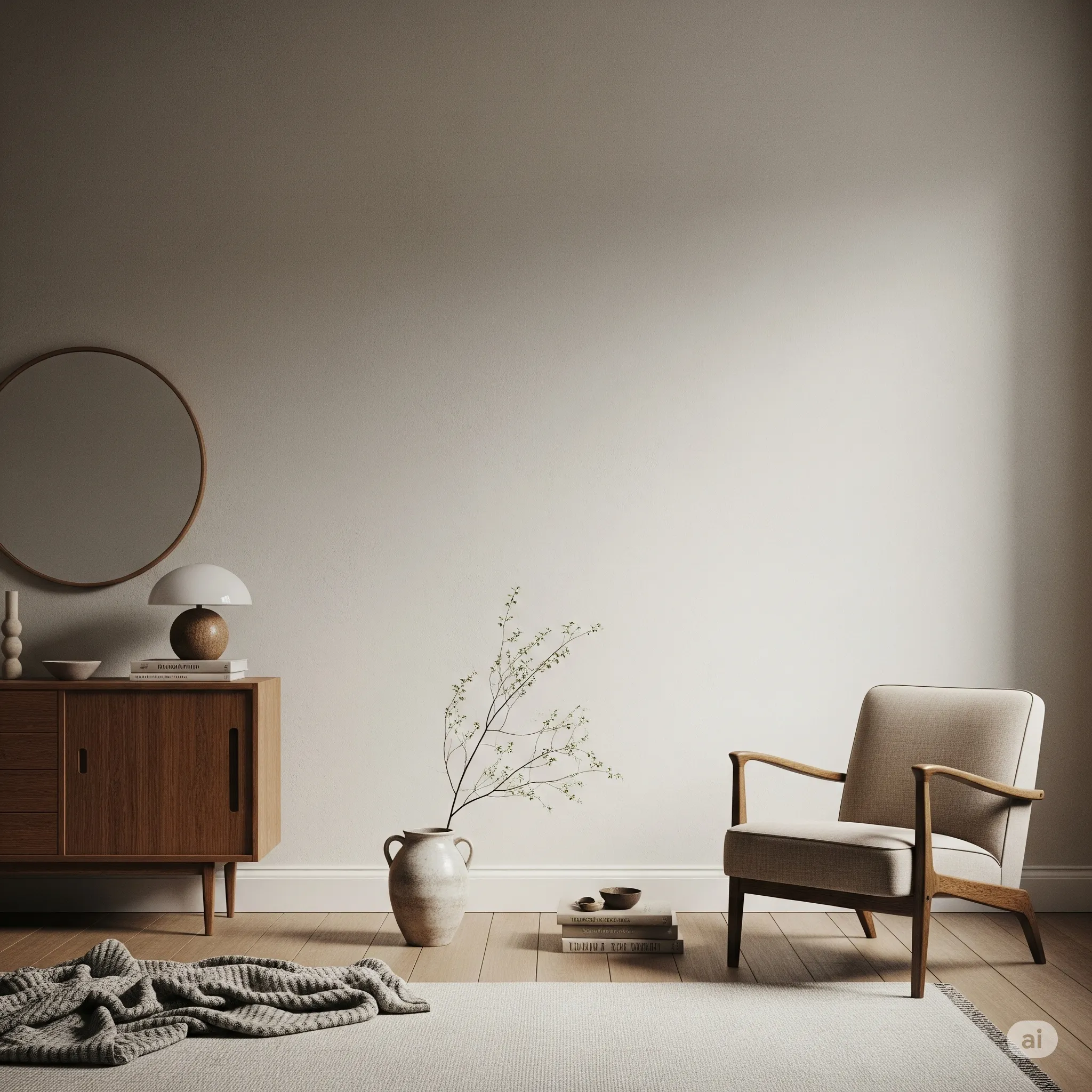In our increasingly consumer-driven world, our homes can easily become repositories for things – possessions accumulated without intention, often driven by trends or fleeting desires. But what if we shifted our focus? What if we embraced the art of less, intentionally curating our living spaces with only the items that truly resonate with us, that hold meaning, and that elevate our emotional well-being? This isn’t about stark emptiness; it’s about the profound power of minimalism and thoughtful curation to transform our homes into sanctuaries of calm, focus, and genuine personal expression.
Minimalism, in the context of home decor and art, isn’t about deprivation. It’s a conscious choice to live with less stuff and more intention. It’s about decluttering not just physical space but also mental space, allowing us to breathe easier and focus on what truly matters. And when it comes to art and decoration, thoughtful curation becomes the guiding principle, ensuring that every piece we bring into our home contributes positively to our emotional landscape.
The Emotional Weight of Excess: Why Less Can Be More
Think about the feeling you experience in a cluttered space. Often, it’s one of overwhelm, anxiety, and distraction. Our possessions can start to own us, demanding our attention and energy. In contrast, a thoughtfully curated, minimalist environment can evoke feelings of peace, clarity, and freedom.
By intentionally reducing the amount of visual noise in our homes, we create space for what truly brings us joy and inspiration. Each carefully chosen piece of art or decor stands out, its beauty and significance amplified by the surrounding simplicity.
Minimalism as Intentional Living: Beyond Aesthetics
Minimalism is more than just a design aesthetic; it’s a philosophy that extends to how we live. It’s about being mindful of our consumption habits, prioritizing experiences over possessions, and creating space for what we value most. When applied to our homes, this translates to:
- Quality Over Quantity: Investing in fewer, high-quality pieces that we truly love and that will stand the test of time, rather than accumulating numerous, less meaningful items.
- Functionality and Purpose: Choosing items that serve a clear purpose and enhance our daily lives. If something doesn’t add value or beauty, it might be time to let it go.
- Emotional Connection: Surrounding ourselves with objects that evoke positive memories, inspire us, or reflect our passions and values.
- Sustainable Choices: Opting for durable, ethically sourced, and timeless pieces that minimize our environmental impact.
The Art of Thoughtful Curation: Selecting with Intention
In a minimalist approach, every piece matters. Thoughtful curation is the process of selecting art and decor with intention, ensuring that each item contributes to the overall emotional atmosphere of your home:
- Listen to Your Inner Voice: Choose art and objects that genuinely resonate with you, rather than following trends or external pressures. What makes your heart sing? What sparks your curiosity?
- Consider the Story: Each piece should have a story, whether it’s a cherished memory, a connection to a person or place, or a reflection of your artistic sensibilities.
- Value Craftsmanship and Detail: Appreciate the skill and artistry that goes into well-made items. These pieces often have a depth and character that mass-produced items lack.
- Think About the Emotional Impact: How does a particular piece of art make you feel? Does it evoke joy, peace, contemplation, or inspiration? Choose items that contribute to the emotional tone you want to create in your home.
- Don’t Be Afraid to Edit: Regularly review your belongings and be willing to let go of items that no longer serve you or align with your minimalist vision. This ongoing process of decluttering and refining is essential.
Creating Space for What Matters: Art in a Minimalist Home
In a minimalist home, the art you choose becomes even more significant. It’s not just one of many distractions; it’s a focal point, a source of inspiration, a moment of beauty in a serene environment. Consider these tips for incorporating art into a minimalist space:
- Quality Over Quantity: One or two impactful pieces can have a greater emotional resonance than a multitude of smaller, less significant items.
- Strategic Placement: Choose locations where your art will be truly appreciated and can serve as a visual anchor in the room.
- Focus on Form and Texture: In a minimalist setting, the form, texture, and materials of your art and decor take on greater importance. Consider pieces with interesting textures or unique shapes.
- Embrace Negative Space: Allow your art to breathe by leaving ample empty space around it. This enhances its impact and creates a sense of calm.
- Consider Black and White: Black and white photography or abstract art can complement a minimalist aesthetic beautifully, adding depth and sophistication without introducing a lot of color.
The Ongoing Journey of Simplification
Embracing minimalism and thoughtful curation is not a one-time task; it’s an ongoing journey of self-reflection and refinement. As your tastes, needs, and values evolve, so too will your relationship with your possessions. Be open to revisiting your choices, decluttering regularly, and continually seeking to create a home that truly supports your emotional well-being.
Final Thoughts: Finding Beauty in the Essential
The art of less is about finding beauty in the essential, about creating a home that reflects not just what we own, but who we are and what we value. By intentionally choosing the art and objects we surround ourselves with, we can elevate our home’s emotional landscape, creating spaces that are not only visually serene but also deeply meaningful and truly our own. It’s an invitation to live more fully by living with less, and to discover the profound sense of peace and contentment that comes from a thoughtfully curated life.
